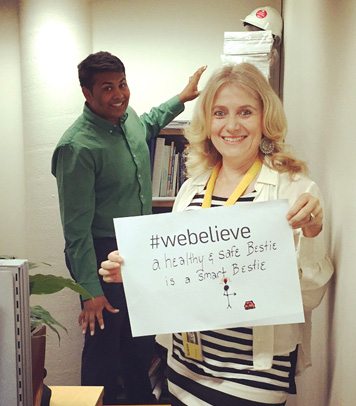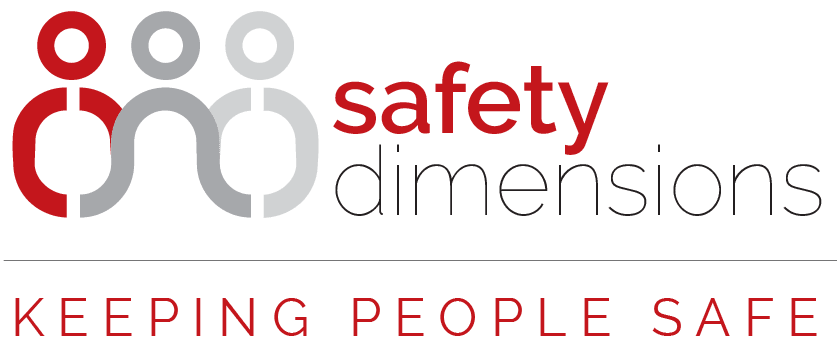 Looking Out For Our Besties – Best & Less
Looking Out For Our Besties – Best & Less
In this interview with Best & Less National HSE Manager Susan McLennan we dive into the challenges of managing safety and leadership competency in a competitive major national retail environment.
Background Briefing
Since 1965, Best & Less (B&L) has grown from a single shop in Sydney to become a national multi-channel retailer of affordable fashion operating 197 sites Australia-wide, and employing over 4,300 people.
Safety & Leadership Dimensions has partnered with Best & Less in a number of training initiatives. Beginning in 2012, we partnered with the B&L WHS team to help their leaders deepen their understanding of safety culture so leaders could demonstrate effective senior safety leadership and guide their teams to ensure the both staff and customers were safe.
Safety Dimensions & Leadership Dimensions conducted one masterclass session with the Senior Leadership Team and four 2 day sessions for senior executive leaders focused on how to be a WHS leader, to increase hazard near miss reporting and prevent incidents. The program also focused on enhancing individual skills in consultation and communication skills to enable the sometimes difficult conversations that lead to engagement and empowerment to improve WHS performance in the workplace.
We partnered with B&L to design and facilitate six coaching and mentoring’ workshops for over 200 B&L store managers across the country. The key outcomes from this program were to provide B&L store managers with:
- The ability to coach individuals and teams.
- People management skills.
- Skills and ability to provide constructive feedback.
In this interview with B&L National HSE Manager Susan McLennan we dive into the challenges of managing safety and leadership competency in a competitive major national retail environment.
A Moment With Best & Less Leader Susan McLennan (National HSE Manager)
What types of challenges are unique to the retail environment in regards to managing WHS and people management?
Retail is fast paced and under increasing pressure to perform in a globally competitive market. Possibilities for sales are endless but people have limited capacity so when B&L underwent change we needed to keep the health and safety of our Besties’ (Best & Less staff members) as a priority to ensure our sustainable success and wellbeing. Our high risk issues are similar to other retailers, our systems were behind in 2012 so we needed to catch up and be smarter, faster at controlling hazards to support our growth.
Why did you engage Safety Dimensions and Leadership Dimensions to assist you on your journey?
I think Safety Dimensions has a reputable global network and sometimes Companies like to hear from someone outside to get a perspective on where they sit compared to others. The 5 Stages of Safety Culture exercise was very valuable as many of our leaders rated B&L at the top when reality was closer to the bottom – which gave us opportunity to move up the scale quickly which we have taken.
How would you best describe the WHS culture changes Best & Less has put in place since you started your improvement journey?
B&L is blessed with a great family-like culture so this enabled us to engage people in WHS management because Besties’’ care. From a business perspective good WHS management is just good business management so demonstrating the wins we could achieve by a little prevention was consistent with reducing costs and increasing benefits to team members and customers alike. For example: product on floor may trip me over, or another Bestie or a customer, the product will become soiled and damaged and have to be written off or sold at a loss. So introducing a tight WHS system was a win-win.
What outcomes are you seeing that support B&L’s goals and vision as a direct relationship to the education and skills development?
Engagement of senior leaders is the only way to truly culturally change WHS behaviours and the senior leadership training package really does that. Two days of people’s time is a big investment and we’re very glad the CEO and Head of People and Culture committed to that – it shows WHS is a priority. In actuality the course was a great development in leadership and communication and WHS was just the vehicle; so the benefits of the program really expanded into all everyday interactions encouraging consultation.
What specific examples of positive change can you give us -that relate to the way safety/leadership performance is improving – at a senior (exec level), at a middle management / coordinator level and at store level?
First we automated our reporting systems so we could better analyse root causes and provide data to the leadership team.
Then we combined our tools and focus to control those key hazards. We commenced a national consultative forum so controls could be shared across all our 197 sites. We have started to consult in the design phase with our Property, Visual Merchandise and Supply teams so we ensure safe implementation of changes.
An example is our bi-monthly checklist, in 2013 our compliance was 39% because no one checked or followed up. Now we do national business/WHS promotion of the checklist like an event (which we do so well) and we have reached 99.5% compliance together.
What has the feedback been from your staff, clients and suppliers on the new B&L works in relation to the increased focus and education/ expectations re WHS performance?
We have a lot of great store managers who have embraced their accountabilities and completed actions and seek advice on WHS issues so we get the best outcomes. WHS is now compliant and on everyone’s radar. We have some great online training resources that enable us to learn when suits the Bestie rather than schedules that clash. Most importantly we report and resolve hundreds of hazards each month and our incidents have halved so the return on investment has come through.
What’s next on the journey for Best & Less?
We are tinkering with wellbeing now, in a cost effective environment that can be considered an extra, however we have proven investment in focusing on people always brings returns.
What advice would you offer to other retailers on the improving safety journey – what guidance would you give them about working with external consultants such as Safety Dimensions and Leadership Dimensions?
You cannot be without a strategic WHS effort, there is no point increasing sales if you are spending more on injured, stressed or unwell people or recalling/repairing unsafe equipment, environments or workflows. Work together with a little WHS every day and success is assured.

